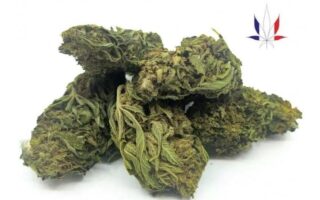Unveiling the World of Edibles: A Comprehensive Guide to Cannabis-Infused Treats
In recent years, the landscape of cannabis consumption has transformed dramatically, transcending traditional methods like smoking and vaping. At the forefront of this evolution are edibles—cannabis-infused foods and beverages that offer a unique blend of flavor and effects. From tantalizing gummies and sumptuous chocolates to savory snacks, edibles have carved a niche in both the recreational and medicinal arenas, appealing to a diverse audience seeking alternatives to conventional consumption. But what exactly are edibles, and how do they work? In this article, we will delve into the fascinating world of edibles, exploring their composition, effects, and the science behind their popularity. Whether you’re a seasoned enthusiast or a curious newcomer, join us as we unravel the intricacies of these delicious and versatile treats.
Table of Contents
- Understanding Edibles: A Comprehensive Overview of Cannabis-Infused Products
- The Science Behind Edibles: How Dosage, Absorption, and Potency Work
- Exploring the Varieties: Different Types of Edibles and Their Unique Effects
- Safety First: Best Practices for Enjoying Edibles Responsibly
- Q&A
- In Summary
Understanding Edibles: A Comprehensive Overview of Cannabis-Infused Products
Edibles have taken the cannabis world by storm, offering a unique way to experience the effects of this versatile plant. These cannabis-infused products come in various forms and flavors, appealing to a wide range of consumers. Understanding the components that make edibles special is essential for anyone looking to explore them. Some key characteristics include:
- Variety of Forms: Edibles can be found as candies, brownies, drinks, and even savory snacks.
- Dosing Precision: Many products come with clear dosing information, allowing users to gauge their intake.
- Delayed Onset: Unlike smoking, effects can take anywhere from 30 minutes to 2 hours to fully set in.
- Long-Lasting Effects: The experience can last longer than other consumption methods, often up to several hours.
The process of creating edibles typically involves infusing fats or oils with cannabinoids, which can result in a wide range of potencies and flavors. Understanding the differences between THC and CBD edibles is also crucial, as they provide distinct experiences. Below is a simplified comparison:
| Type | Effects | Use Cases |
|---|---|---|
| THC Edibles | Intense psychoactive effects, euphoria | Recreation, stress relief |
| CBD Edibles | Non-psychoactive, relaxation, relief | Anxiety, inflammation management |
The Science Behind Edibles: How Dosage, Absorption, and Potency Work
Understanding how edibles work involves delving into several crucial factors: dosage, absorption, and potency. Dosage refers to the amount of cannabinoids, such as THC or CBD, contained in each edible. This measurement is typically expressed in milligrams and can vary significantly between products. While some edibles contain microdoses meant for subtle effects, others deliver high doses aimed at more pronounced experiences. It’s essential to start with a lower dosage and wait for the effects to kick in before consuming more, as the body’s reaction can be unpredictable.
Next is absorption, which is how the body utilizes the cannabinoids in the edible. When consumed, edibles pass through the digestive system and are metabolized by the liver. This process converts THC into 11-hydroxy-THC, a compound that is more potent and has a longer-lasting effect compared to inhaled THC. This transition means that effects might take longer to manifest—often anywhere from 30 minutes to two hours—making it crucial to be patient and mindful of the body’s response.
| Factor | Description |
|---|---|
| Dosage | The amount of cannabinoids, expressed in milligrams. |
| Absorption | How cannabinoids are metabolized and utilized by the body. |
| Potency | The strength of the edible, determined by its cannabinoid content. |
Lastly, potency refers to the strength of the edible based on its cannabinoid content. It varies based on several factors, including strain, preparation method, and the ingredients used. As consumers become more educated about edibles, they are increasingly interested in understanding the potency levels that best fit their desired experiences. This interest has prompted manufacturers to provide more detailed information on packaging, helping users make informed decisions. Calculating the right dosage combined with an awareness of potency can lead to a more enjoyable and effective culinary experience.
Exploring the Varieties: Different Types of Edibles and Their Unique Effects
When it comes to edibles, the variety is as rich as the flavors they offer. From sweet treats to savory bites, there’s something for everyone. Below are some popular types of edibles that have distinct characteristics and effects:
- Gummies: Often bursting with flavor, these chewy confections can deliver a mellow high or a more intense experience, depending on the dosage.
- Chocolate: A decadent option that combines the rich taste of chocolate with a cannabis infusion, typically providing a gradual onset of effects.
- Baked Goods: Think brownies or cookies! These offer nostalgic flavors while delivering a variety of effects based on the strain used.
- Savory Options: From infused oils to salty snack mixes, these can provide a unique terpene profile and a different consumption experience.
Each type of edible has its own bioavailability and onset time, which can significantly influence your experience. The table below outlines some key differences among popular edibles:
| Type of Edible | Onset Time | Duration of Effects |
|---|---|---|
| Gummies | 30 mins – 2 hrs | 4 – 6 hrs |
| Chocolate | 1 - 2 hrs | 4 – 8 hrs |
| Baked Goods | 1 – 4 hrs | 6 – 8 hrs |
| Savory Snacks | 30 mins – 2 hrs | 4 – 6 hrs |
Understanding these differences can help you choose the right edible for your needs, ensuring that your experience is enjoyable and matches your desired effects.
Safety First: Best Practices for Enjoying Edibles Responsibly
To fully enjoy the experience of consuming edibles, it’s important to proceed with caution and awareness. Understanding dosing is paramount; starting with a low dose can help gauge individual tolerance levels without overwhelming effects. Always check the product packaging for recommended serving sizes, and be mindful that the onset time for edibles can be substantially longer than other forms of consumption, often taking anywhere from 30 minutes to 2 hours to kick in. Here are some best practices to ensure a safe experience:
- Start small: If you’re new to edibles, try a dose of 2.5 to 5 mg of THC.
- Wait it out: Allow 1-2 hours before considering taking more.
- Stay hydrated: Drink plenty of water, as edibles can lead to dry mouth.
- Choose a safe environment: Enjoy edibles in a comfortable setting with trusted friends.
Monitoring your body’s response can also enhance your overall experience and minimize any unwanted effects. Keeping a journal of what you consume can help you identify which products work best for you. If you find yourself feeling uneasy, remember that the effects will eventually wear off; distracting yourself with activities like watching a movie, listening to music, or engaging in light conversation can be beneficial. Here’s a quick reference table for understanding common THC concentrations and suggested uses:
| THC Concentration (mg) | Experience Level | Recommended Use |
|---|---|---|
| 2.5 – 5 | Beginner | Great for first-time users or mild effects |
| 10 – 15 | Intermediate | For those with some experience seeking moderate effects |
| 20+ | Advanced | Experienced users, best for deeper relaxation or intense experiences |
Q&A
Q&A: What Are Edibles? Understanding Edible Drugs
Q1: What exactly are edibles?
A1: Edibles are food items infused with cannabinoids, primarily THC (tetrahydrocannabinol) and CBD (cannabidiol), extracted from the cannabis plant. They come in various forms, including gummies, chocolates, baked goods, beverages, and more. Essentially, if it can be eaten and contains cannabis, it qualifies as an edible!
Q2: How do edibles differ from other forms of cannabis consumption?
A2: Unlike smoking or vaping, which deliver cannabinoids directly into the bloodstream through the lungs, edibles are metabolized by the digestive system. This means that the effects of edibles can take longer to set in, typically 30 minutes to 2 hours, but they can last significantly longer, often 4 to 8 hours or more.
Q3: What effects can one expect from consuming edibles?
A3: The effects of edibles can vary greatly depending on the dosage, the individual’s metabolism, and prior experience with cannabis. Generally, users may experience euphoric highs, relaxation, heightened sensory perception, or even altered thought processes. However, the delayed onset can lead to unintentional overconsumption, so it’s wise to start with a low dose and be patient.
Q4: Are there different types of edibles?
A4: Indeed! Edibles come in many forms, each offering unique flavors and experiences. Gummies and chocolates are popular due to their ease of consumption and wide appeal. Baked goods, like brownies and cookies, provide a nostalgic treat, while beverages like infused teas or sodas offer a refreshing alternative. Each type varies in potency and can cater to different palates and preferences.
Q5: Can edibles be made at home?
A5: Absolutely! Many enthusiasts enjoy crafting their own edibles at home. One common method is to infuse butter or oil with cannabis, which can then be used in various recipes. While making edibles can be fun and creative, it’s essential to measure ingredients carefully and understand the dosage to ensure a safe and enjoyable experience.
Q6: Are edibles safe to consume?
A6: When produced and labeled correctly, edibles can be safe to consume. However, consumers should always pay attention to dosing, especially if they are inexperienced with THC. It’s important to be aware of local laws and regulations regarding cannabis products, as quality control can vary widely. If purchasing from a dispensary, look for products that have been tested for potency and contaminants.
Q7: Who should avoid edibles?
A7: Individuals who are sensitive to THC, have a history of substance abuse, or are pregnant or breastfeeding should exercise caution. It’s also advisable for first-time users or those with medical conditions to consult with a healthcare professional before experimenting with edibles.
Q8: What are the potential risks of consuming edibles?
A8: While many people enjoy edibles without issues, there are potential risks to be aware of. Overconsumption can lead to uncomfortable effects such as anxiety, paranoia, or even physical discomfort. Because the onset is delayed, some users may mistakenly believe they haven’t consumed enough and take more, leading to an unexpected and overwhelming experience.
Q9: How can one responsibly enjoy edibles?
A9: Responsible consumption starts with understanding your limits. Begin with a low dose, ideally 5-10 mg of THC, and wait at least an hour before considering more. Also, always consume in a safe environment, ideally with friends who can provide support if needed. Educating yourself about products and their effects will help ensure a positive experience.
Whether it’s for recreational use or medicinal benefits, edibles remain a popular choice in the cannabis world, offering an alternative to traditional smoking methods. Just remember: slow and steady wins the race!
In Summary
As we conclude our exploration of edibles, it’s essential to acknowledge the diverse landscape they inhabit within the realm of cannabis consumption. From deliciously infused treats to innovative culinary creations, edibles offer a unique alternative that combines the benefits of cannabis with the joys of eating. While they present opportunities for both therapeutic use and recreational enjoyment, it’s crucial to approach them with knowledge and caution. Understanding their potency, effects, and responsible usage can ensure a safe and pleasurable experience. As the conversation around cannabis continues to evolve, edibles stand as a testament to the ever-expanding possibilities of this plant. Whether you’re a seasoned enthusiast or a curious newcomer, the world of edibles invites you to experience cannabis in an entirely new flavor. So, as you venture forth, remember to savor every moment—responsibly.


